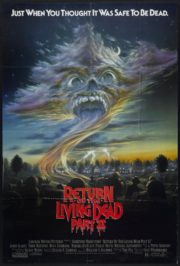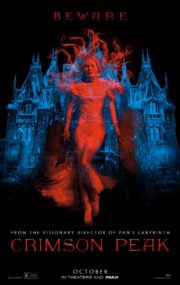“An Eccentric Soiree of Sinister Storytelling”
Imagine a subdued gathering where tales of terror emerge as naturally as the brandy is poured. “Vault of Horror,” directed by Roy Ward Baker, is a horror anthology that interweaves a thread of dread through the lives of five men trapped in the cryptic confines of a vault – a setting rife with potential for frights aplenty since its release in 1973. With each segment adapted from EC Comics tales, the film descends into the darkness of the human psyche without the aid of a typical spoiler-ridden prologue. Instead, it invites viewers to bask in the chilling ambiance of unpredictability.
“A Tapestry of Terror Woven in Shadows”
The atmospherics of “Vault of Horror” are commendably achieved, employing suspense and the ominous over the visually repulsive. Baker’s adept manipulation of tension and fear keeps viewers teetering on the edge of anticipation, even in the absence of modern-day shock tactics. The creeping sense of foreboding is the film’s cornerstone, where the true horror lies not just in the grotesque but in the impending doom an unseen abomination can inflict.
Visuals That Haunt You Beyond the Screen
The cinematography of “Vault of Horror” has a vintage elegance, captivating in its simplicity. Lighting plays its part masterfully, creating a play of light and shadow that serves as the silent narrator of impending doom. The palette veers towards a gothic overtone, with vivid reds punctuating the somber tones to signify the blood that inevitably enters these macabre narratives. The camera angles are deliberate, often inviting viewers to become co-conspirators in the ghastly events unfolding. While the special effects may not compete with today’s standards, they bear an artisanal charm that is as unsettling as it is creative.
The Sound of Silence (And Screams)
The auditory experience in “Vault of Horror” is deft at reinforcing the terror. The soundtrack insinuates an eerie melody that clings to the consciousness, while sound effects are sparingly used for maximum impact. Moments of dead silence segue into shrill screams, a reminder of the era when terror was delivered neatly between the pauses of tranquility and the crescendos of horror.
“Faces of Fear”
Contrary to many of its successors, “Vault of Horror” doesn’t rely on a single antagonist to carry the unholy torch of terror. Instead, the characters, portrayed by a competent ensemble cast, each become their own harbinger of doom. Their performances range from the comically macabre to the distressingly disturbed, contributing to a pervasive eeriness that feels disturbingly real. Believability here is key, and the actors rise to the occasion, their terror a clear reflection of the imminent horrors they face.
“A Horror For Every Hideous Fancy”
The film dances across multiple sub-genres, including supernatural elements, psychological torment, and ghastly revenge from beyond the grave. It defies easy categorization and therein lies its undiminished charm. Each segment extrapolates a different fear tactic: some offer savored suspense, others shock with a smattering of gore, or jolt with sudden fright. The methods are thoroughly vintage, evoking nostalgia for a time when horror was a slow-burning flame rather than a frenzied inferno.
More Than Just a Shiver Down the Spine
While “Vault of Horror” revels in the macabre, it doesn’t shy away from deeper meaning. It subtly weaves commentary on human nature, predation, and retribution, enriching the ghastly tableau with thought-provoking subtext. Such themes resonate long after the credits roll, posing the question – are we any less monstrous than the tales we fear?
“Not Just for the Faint of Heart”
The verdict on “Vault of Horror” deems it an anthology that endures more through its cerebral intent rather than outright terror. It’s frightful and thought-provoking, a chilling sojourn into an era of horror where storytelling took precedence over sensationalism. While its resonance may vary with the viewer, enthusiasts of classic horror and newcomers to the genre will find this movie both intriguing and delighting in its ingenuity.
Comparable to the likes of “Tales from the Crypt,” its predecessor, or the more contemporary “Trick ‘r Treat,” “Vault of Horror” holds its ground as a seminal work that should be appreciated for its narrative craft and atmospheric allure.
Final Thoughts and Warnings
In sum, “Vault of Horror” is a veritable curiosity shop of the macabre, housing relics that are as captivating as they are chilling. It’s a triumph in anthological horror, showcasing strength in its storytelling and performances. While the special effects and sheer terror may not measure up to today’s visceral standards, the film finds its staying power in its ability to disturb on a more subconscious level. Warning to those who venture: though not rife with graphical excess, the film’s psychological layers peel back to reveal a darkness that might cling to your bones.
“Vault of Horror” remains a movie for the seasoned horror aficionado as well as the suspenseful storyteller, capturing the essence of horror one eerie tale at a time.




